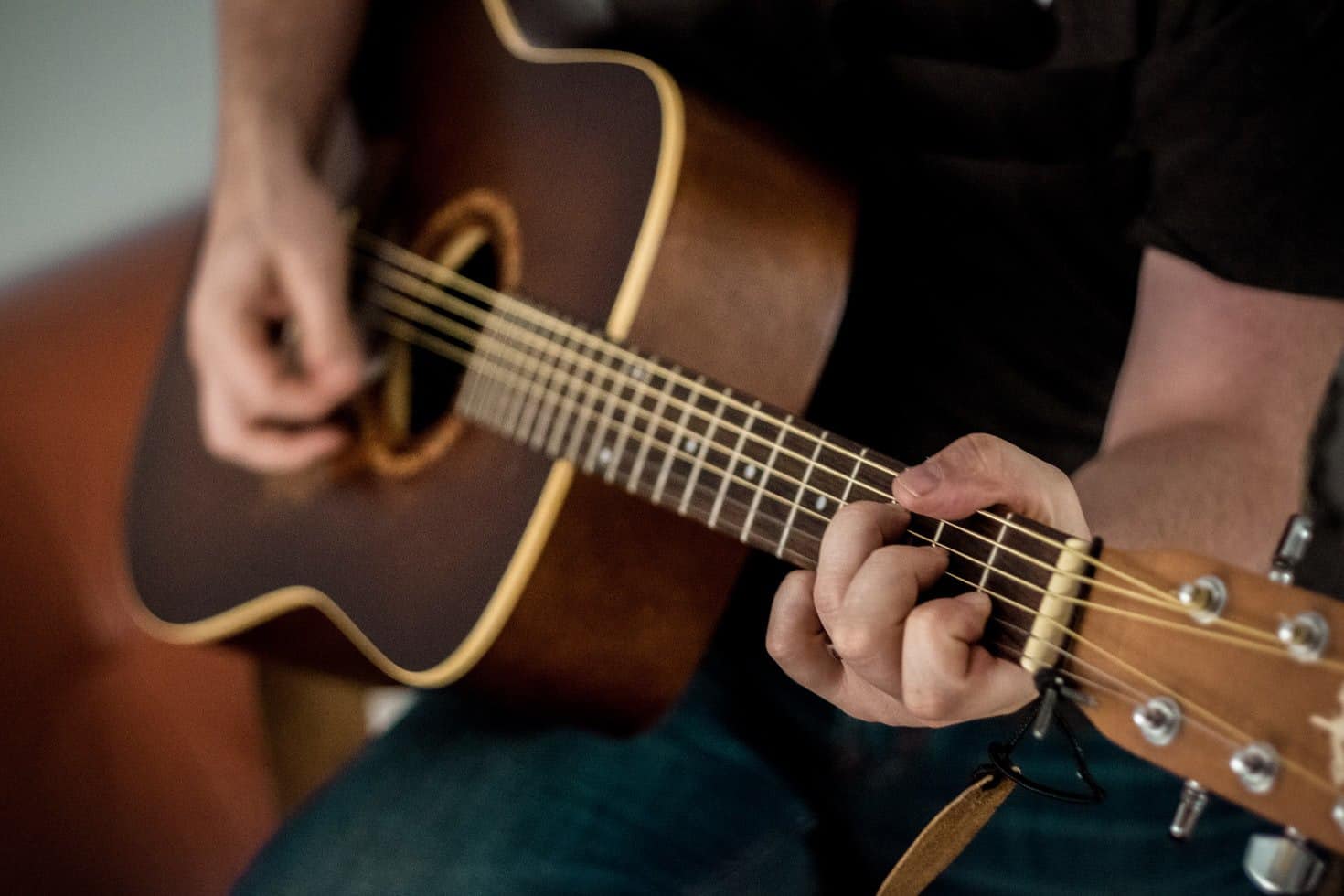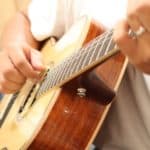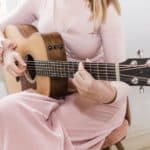When you get your guitar the first thing you may want to do is learn songs so, you sit down and look for pieces to play.
However, you might face a lot of complicated chord shapes, with strange symbols such as maj7 or add9.
At that point, you may think that playing guitar is so hard that you will never be able to do it but that is not true.
In fact, to play the instrument, you don’t need to know those difficult chords at all.
As a guitar player, you are not supposed to know every single chord on the fretboard. To play the guitar, you need to know the basic open chords, their shapes, and how to transpose them. You can add more voicings and extensions down the line if you want to spice up your playing.
You may wonder what are chords I should learn first, but don’t worry, we are here to help you.
Through this article, I will show you which chords are the most relevant and the ones mostly used in popular music.
What are the most important guitar chords to learn on guitar?
When learning guitar, one of the first approaches is chords but before we continue we must explain what are they.
In short, chords are three or more pitches played simultaneously, if you think of a guitar, chords are those fixed shapes that are strummed or arpeggiated.
Having said that, the most important chords to learn on guitar are open chords (also called cowboy chords) being the most basic and easiest, to begin with.
Open chords are the most relevant because there is a wide range of songs made using them, from ballads to rock songs.
It is said that they are uncomplicated because some of them share shapes which made them easier to play with and learn.
What is more, they are played almost in the same place on the fretboard so you won’t have to go through different neck sections.
How long will it take to learn these chords?
As they are mostly placed near the lower frets it would be faster to learn them.
We mentioned that they share the same fretboard section, so you won’t spend more than a month learning them.
Once you know every open chord, you will have to work on changing them while playing.
Of course, there are some shapes and changes simpler than others but I am sure you will get the hang of it after a month, I promise.
Do all songs use these chords?
Actually, not all songs use this kind of chord, although open chords are the most important, there are pieces which doesn’t use them.
Needless to say, this type of chord is not the only possibility, you can play chords along the entire fretboard.
However, many popular songs use cowboy chords so by learning them you will have the power to play literally thousands of songs.
Ballads or acoustic songs would be a perfect example of pieces that mainly apply open chords.
The most basic thing you should know about chords
Apart from the definition of chords by itself (explained above) the most basic thing you should know about them is the difference between major and minor chords.
What makes chords major or minor is their third, although this might seem confusing, I will try to explain it most thoroughly.
Thirds are the ones that decide if the chord is major or minor, major thirds are found four semitones (or four frets) from the root of the chord whereas minor thirds are three semitones (or three frets) from the fundamental of the chord.
Furthermore, if you want the minor version of a major chord what you have to do is just by changing its third.
Thirds not only define the key but also define the mood of the chord.
Although in music everything is subjective, it is thought that major chords sound happy or shiny while minor ones sound kind of sad or emotive.
What are your expectations with the instrument?
We are discussing what are the most relevant chords to learn in guitar but that will depend on your expectations.
If you intend to strum a bunch of easy songs, this article is perfect for you, try to focus on learning open chords.
Nevertheless, If you want to know more about chords, you could use this article as a starting point, begin learning cowboy chords, and then you can go for power chords, octave chords, etc. just keep on learning, don’t get stuck.
Do you really need to learn all the chords on the guitar?
As a first learner, you may think that you will never get to know every single chord on guitar but let me tell you that is not strictly necessary.
You don’t need to know every kind and chord shape, what is more, many famous musicians don’t even know them.
However, if your goal is to learn the guitar, the more information you have the better for your growth.
Besides, it will give you a wider range of options at the moment of playing or when you are writing music.
Think of it as colors in a painter’s palette, if you just have two or three colors you will be very limited and will end up with a poor painting.
The same happens in music, if you only dispose of a handful of simple chords maybe you won’t be able to truly show what you want actually express.
You could play any chord just by learning these 4 shapes
Although every open chord position is important and all of them should be learned, only four chords will help you to play every minor and major chord through different sections in the fretboard.
We are talking about basic open A – Am – E – Em chord shapes, they are easy to remember and play.
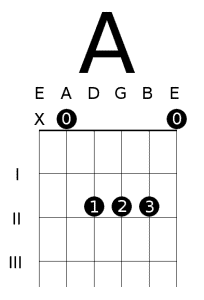
To begin with, A is quite a simple chord you have to set your fretting hand in the second fret on the second, third, and fourth strings, leaving the fifth string (which is A) and the first one open to play it but not playing to sixth string.
You can play this chord by using your index, middle, and ring fingers but I suggest you get used to playing it using your middle, ring, and pinky.
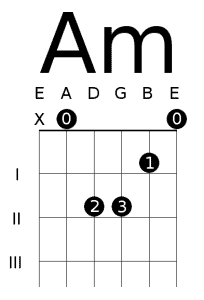
Regarding Am, there aren’t major differences, as mentioned before you will have to change the major third by a minor one.
What you have to do is press the second string on the first fret then, the third and fourth string on the second fret, and again, leave the open A in the fifth string and the high open E but omitting the low E.
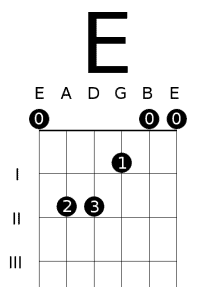
The next chord is E, pretty similar to A but in my view, easier.
You will press the first fret on the third string with your index while pressing the second fret on the fourth and fifth strings with your middle and ring fingers, letting the rest of the strings ring.
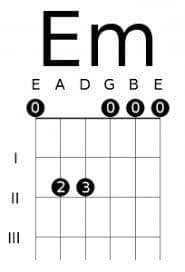
Finally, we have Em, even easier than its major counterpart.
You will press just the fourth and fifth strings on the second fret with your middle and ring fingers, leaving the other four strings open.
Do you remember that I told you these chords will help you along the entire neck?
That’s because you can transpose those four chords.
Transposing means shifting pitches up or down while maintaining the relationships between them.
This way, for instance, if you take an E chord and transpose it just 1 fret up, you will get an F chord.
Do it again and you have an F#.
Easy, right?
By using your index finger you can do barre chords, your finger will work as a capo so that you could play chords just by holding the explained shapes.
Since you will have to know where to find the notes along the sixth and fifth strings I will give a diagram of the whole fretboard.
Easy songs to start practicing your chords
Having discussed everything related to open chords, I would like to give some simple songs for you to start working on them.
What is more, I’ll be leaving the link to the song and also to a video with lessons to make it even easier.
What’s Up
Four Non-Blondes created one of the most famous songs of every time, with just three chords along with the whole song.
A perfect piece for beginners to start getting in the mood of playing chords.
Here’s a lesson:
Knockin’ on Heaven’s Door
Another classic from music history, this time by the great Bob Dylan.
Knockin’ On Heaven’s Door is a popular song with standard chords that first learners will love.
Here’s the song:
Here’s a lesson:
Twist And Shout
The Beatles couldn’t be absent from this list and Twist And Shout is a fantastic song to play at parties.
Just a set of easy, open chords played repeatedly and you will have the audience in your hands.
Here’s the song:
Here’s a lesson:

Hello there, my name is Ramiro and I’ve been playing guitar for almost 20 years. I’m obsessed with everything gear-related and I thought it might be worth sharing it. From guitars, pedals, amps, and synths to studio gear and production tips, I hope you find what I post here useful, and I’ll try my best to keep it entertaining also.

